Click on the image above to play the video
On CTV’s The Social, we celebrate the long weekend by raising a glass to trailblazing Canadian wineries. These industry pioneers are leading the way in many areas, like new winemaking techniques and strong environmental practices.

They’re also leaders in the quality of wines they produce. Here to highlight her top picks from across the country is Natalie MacLean who offers Canada’s most popular online wine classes.
We’re starting on the west coast in British Columbia. What makes Gold Hill Winery a standout?
The team at Gold Hill Winery almost exclusively immigrants. The founders, brothers Sant and Gurbachan Gill, were both born in Punjab, India. They immigrated to the Okanagan Valley in the 1980s.
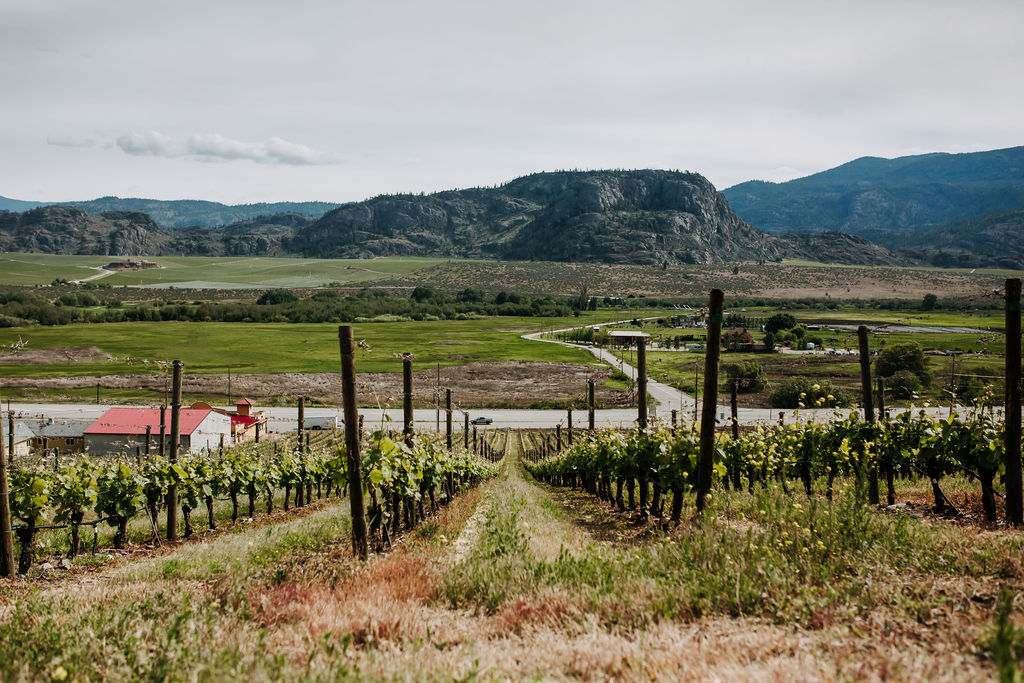
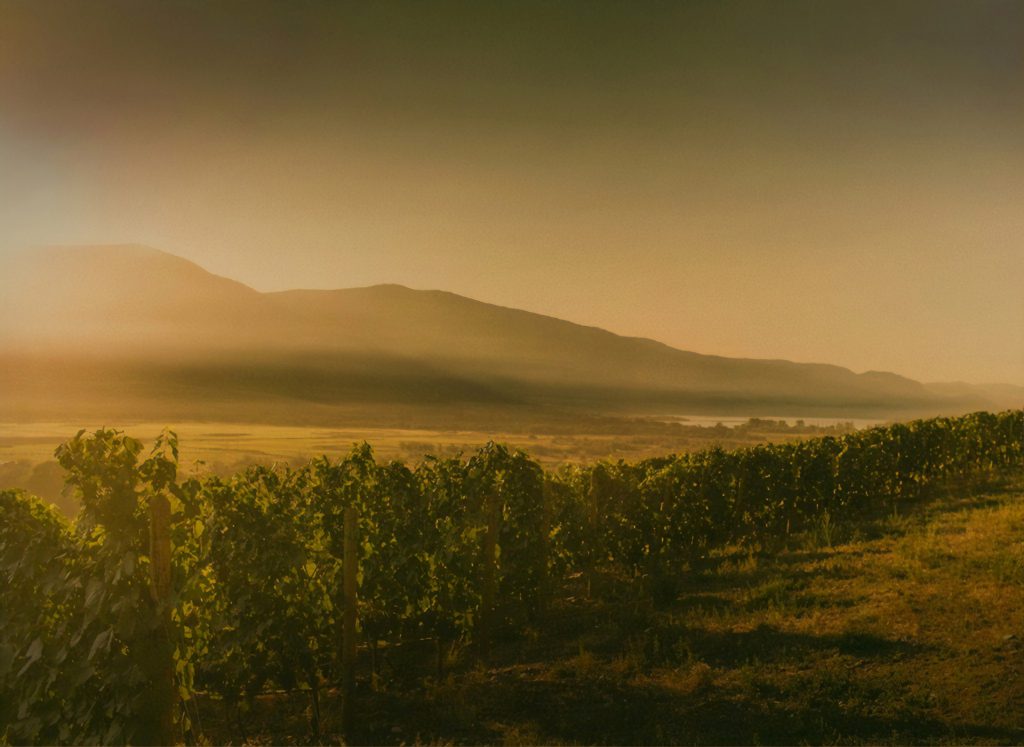
After years of working hard on a fruit farm, they saved enough to buy land on the famous Golden Mile in the heart of the Okanagan in 1995.
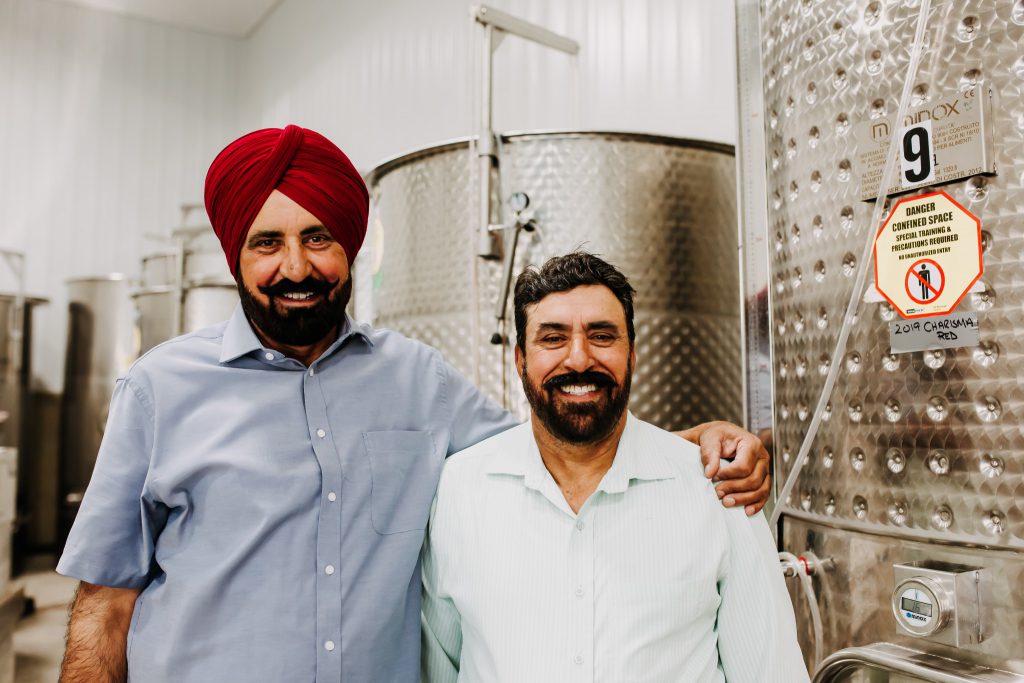

Another thing that sets them apart is aside from the owners, the management team is all women as is winemaker Val Tait, who immigrated from Mexico City.
Instead of going the normal tasting route of white, rosé, red, we’re going to shake things up and start with a red! What are we sipping?
Gold Hill is not only famous for its Cabernet Franc, but the winery is also a champion to make this a signature varietal for the south Okanagan.
Gold Hill Winery Cabernet Franc
Okanagan Valley, BC V.Q.A., Canada
They age their wine for an average of five years before they release it. That’s extraordinary since it not only ties up cash flow, but it also results in highly complex, layered wines for consumers.
This wine exudes aromas of violet, sage, vanilla, blackberry. It’s medium-bodied and juicy with a long finish.
Next we’re heading to Ontario to visit Niagara. Who are you highlighting there?

Thirty years ago, brothers Paul, Matthew, and Daniel Speck started planting vineyards on Niagara’s Short Hills Bench as teenagers when Henry of Pelham was one of only eight wineries in Ontario.
The property has the original buildings of the Speck family’s forefathers from 1842 and a state-of-the-art wine production facility.
They’re also a Founding Member of Vintner’s Quality Alliance (VQA), which was fundamental to establishing quality standards for Ontario and Canadian wine.
The winery is also a Founding Member of Sustainable Winegrowing Ontario. Can you tell us more about that?
Sustainability encompasses the environment, the economy and the community.
For example, they are committed to wetland restoration and have installed biofilters on their ponds. Despite being surrounded with water, they use less water in their winery than those in deserts.
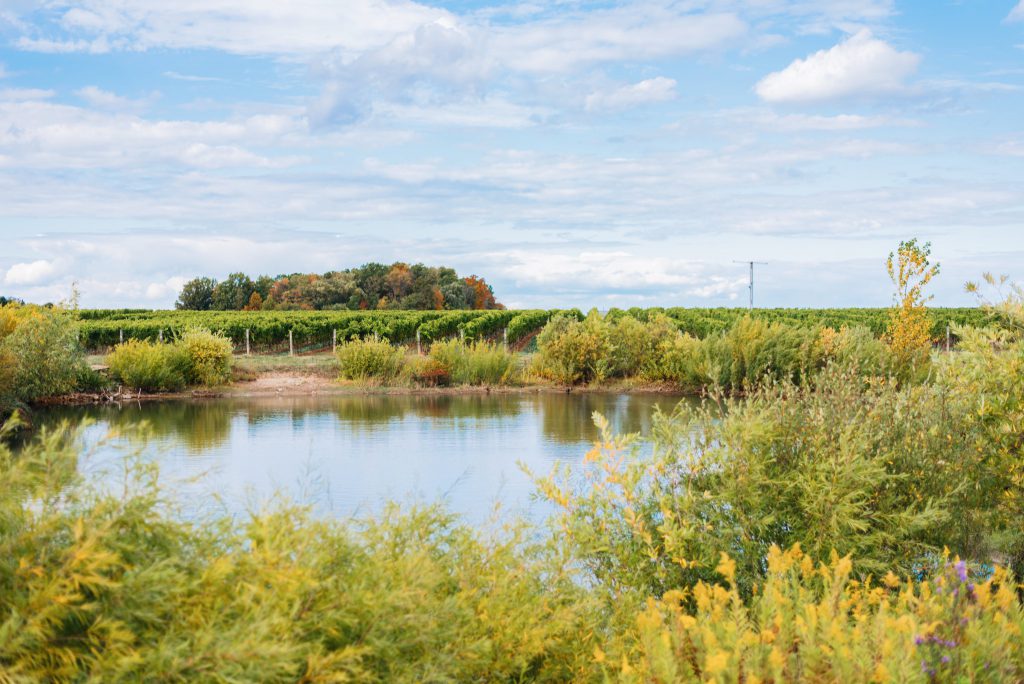
They also work toward woodland preservation which helps protect native raptors that are predators to invasive bird species that threaten their crops.
They’re known as pioneers when it comes to red so what have you brought us to sample?
Henry of Pelham is known as a pioneer for the Baco Noir grape worldwide. It’s an early ripening, winter-hardy varietal suited to Canada’s cool climate.
Henry of Pelham Old Vines Baco Noir
Ontario V.Q.A., Canada
Baco Noir grapes also have a very distinct acidity and normally require some cellar time to soften it.
This full-bodied wine offers aromas of campfire, blackberry, plums, cedar, leather and oak.
The wine is also deeply pigmented. Purple teeth are a badge of honour among those who love it!

We’re staying in Ontario but moving a bit futher east to The Grange of Prince Edward. What sets this winery apart?
Niagara is the best-known wine region in Ontario, but Prince Edward County is where some of the most exciting wines are emerging!
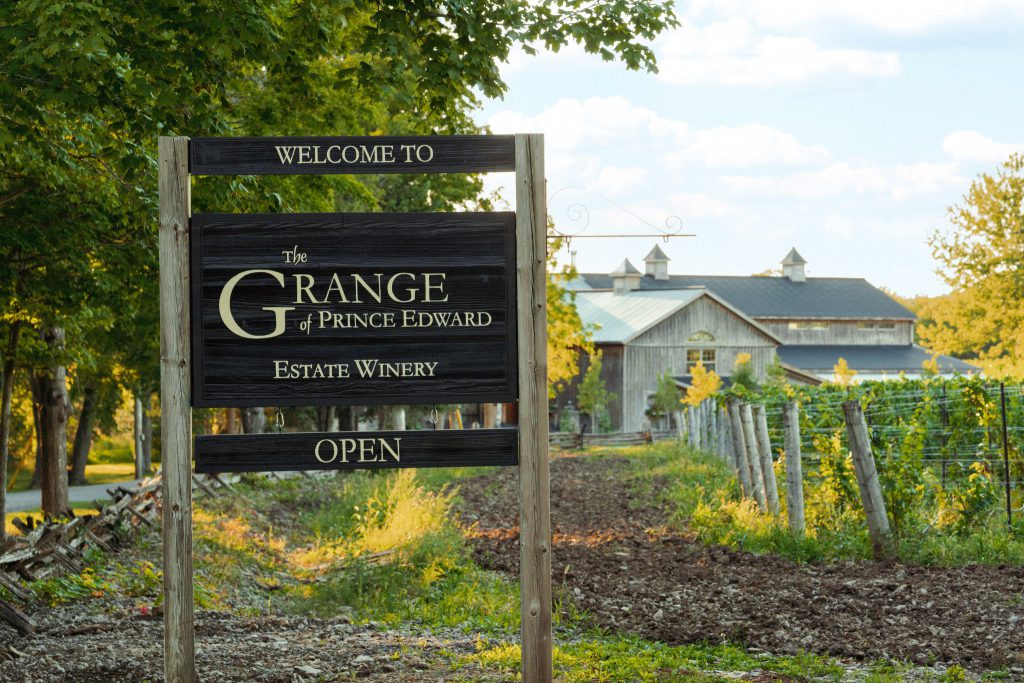
The Grange of Prince Edward has more than 40 acres under vine and it produces low-intervention, terroir-driven wine.
They’ve recently completed an extensive vineyard rejuvenation project.
For two years, they went without a crop and uprooted what was diseased and damaged, replanting thousands of vines by hand throughout the property.
They use integrated pest management in the vineyard to control diseases, so they don’t over spray.
And they use mechanical means to control weeds rather than chemical sprays to reduce toxins in the soil.
What are we sipping from The Grange?
The winery’s Estate Rosé is bursting with fresh notes of watermelon, pink grapefruit and strawberries. This wine is clean, bright and juicy.
Grange of Prince Edward Estate Series Victoria Block Rosé
Prince Edward County, Ontario V.Q.A., Canada
Next we’re headed to Domaine Du Ridge in Quebec. What makes this winery unique?
Domaine du Ridge winery in Saint-Armand has more than 235,000 plants on its property, making it a leader for biodiversity in Quebec.
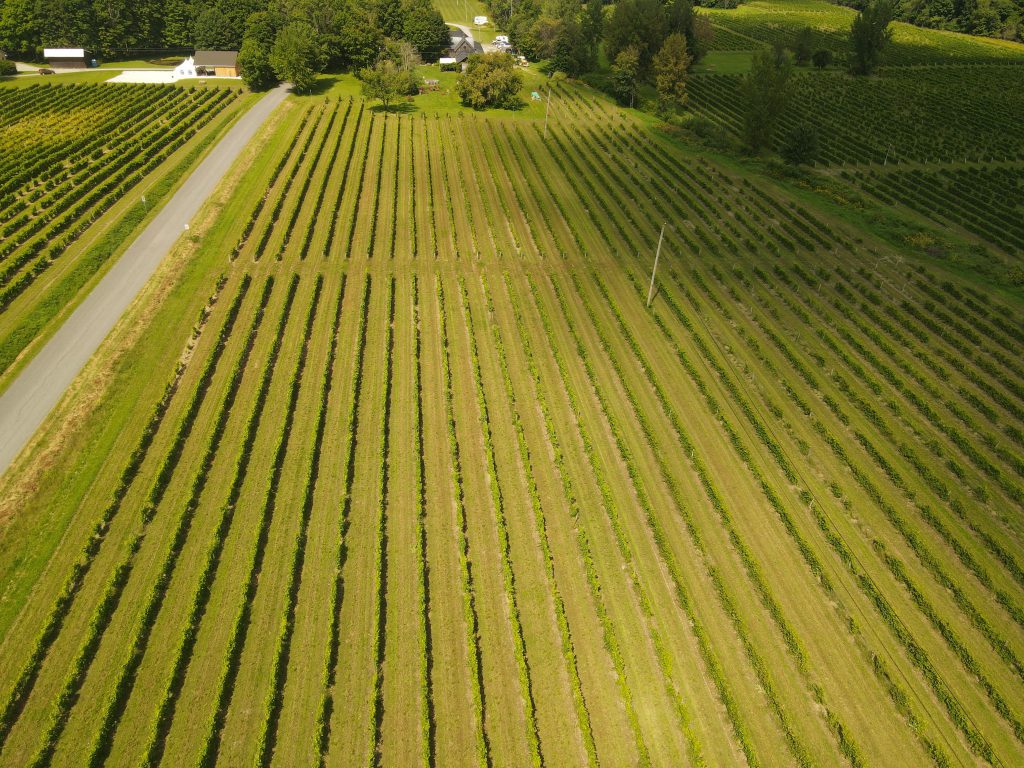
Since each plant can attract a dozen or more different insects and butterflies, the vineyard is teeming with life.
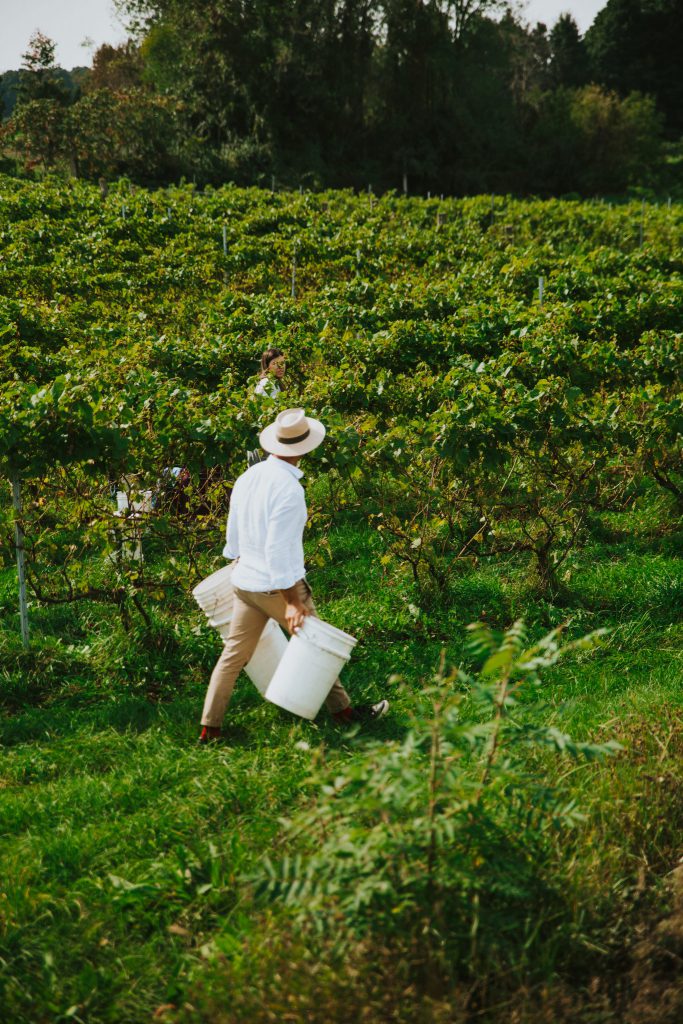
Being environmentally and health-conscious, they are transitioning to organic farming and organic winemaking with a significant portion of the vineyard already in pre-organic certification.
The winery specializes in agritourism, giving vineyard tours and educating guests about this biodiversity and how it helps the vines.
Tell us about the special event they host each fall.
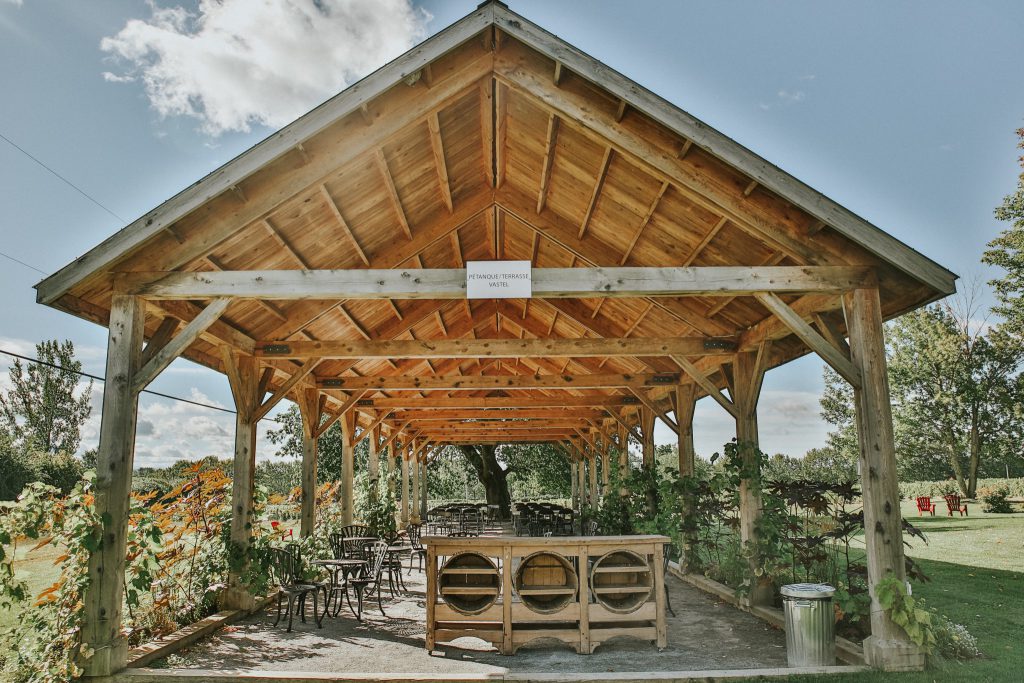
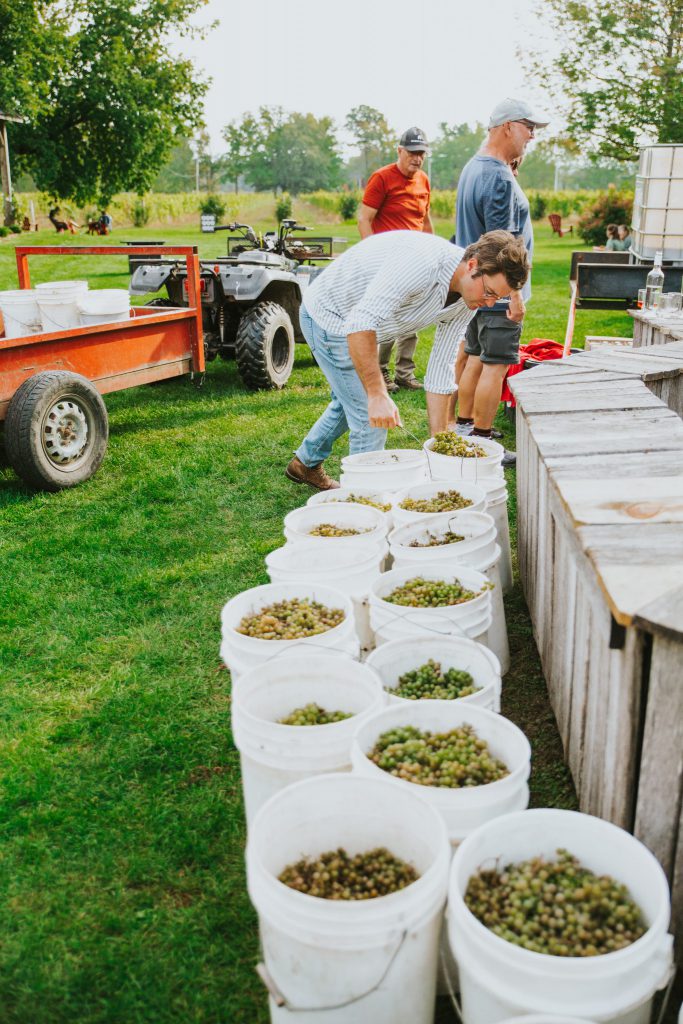
They give guests a deeper connection with the wine through grape stomping in a traditional press called le fouloir. This is a festive event during the harvest season where guests are greeted by musicians, offered a glass of wine, and encouraged to dance as they stomp grapes to the music. This tradition is carried out over three weeks in September for 1,000 litres of wine.
What are we sampling from Domaine du Ridge?
You have Le Stanbridge.
Domaine du Ridge Le Stanbridge
Eastern Townships, Quebec, Canada
The winery specializes in hybrid grapes – a graft between two grapes to create a new one that can withstand the cooler temperatures of Quebec’s Eastern Townships.
This bright and bracing white wine is made with Vidal Blanc grapes.
It offers energetic flavours of lime, guava and white peach.
We’re ending on the east coast in Nova Scotia. Who is the trailblazer you’re highlighting there?
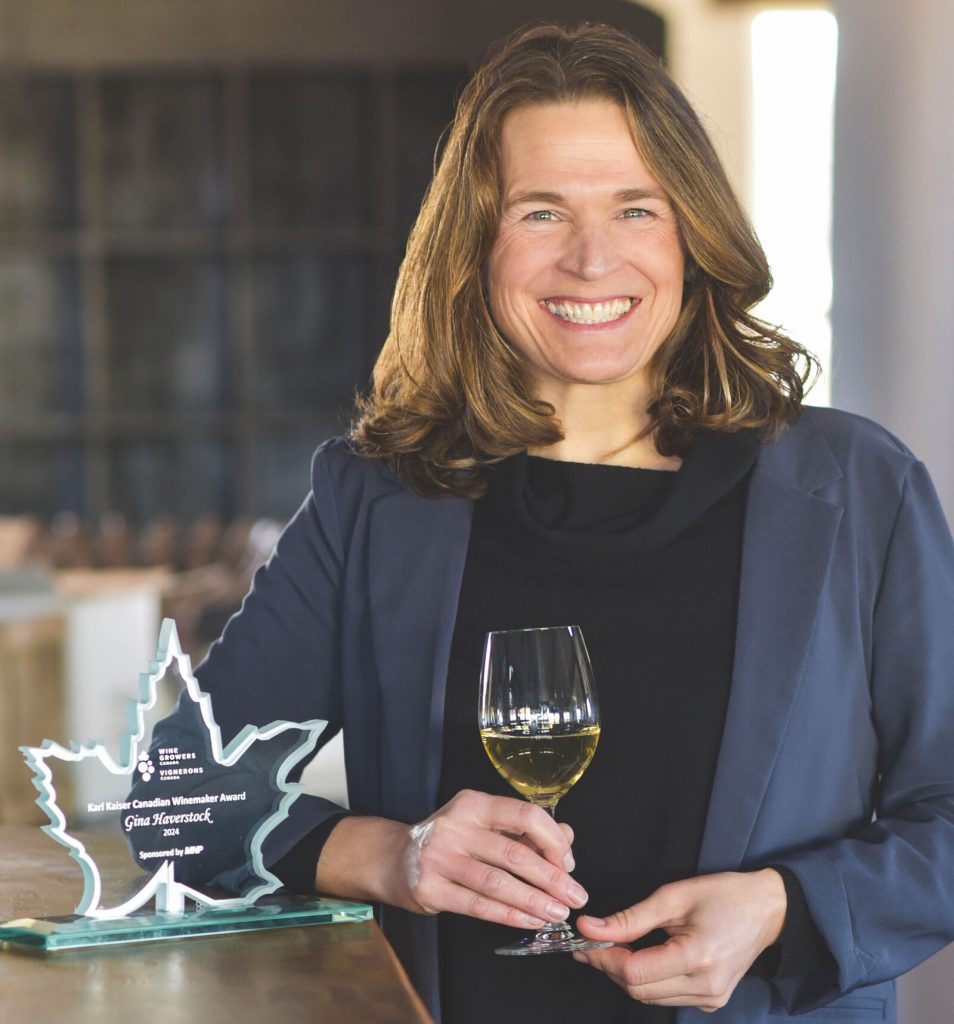
Gina Haverstock of Gaspereau Vineyards was named the 2024 Winemaker of the Year at the Wine Growers of Canada awards.
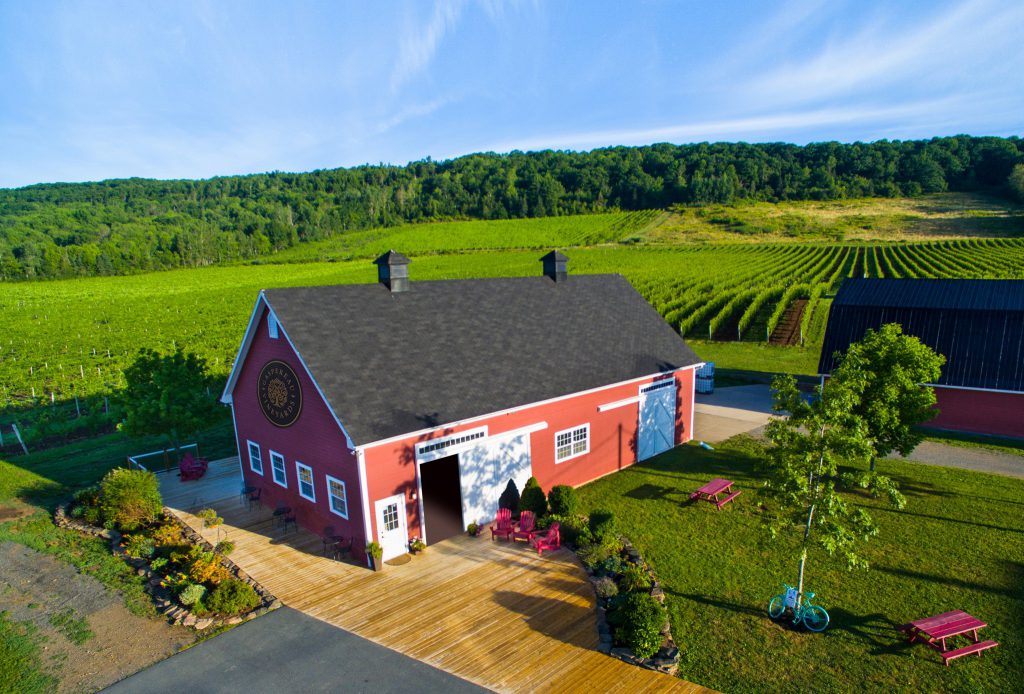
She’s not only the first person outside of Ontario and BC to win this prestigious award, but she’s also the first woman.
She’s known for her aromatic white wines that have received international awards and accolades.
You’ve brought one of Gina’s aromatic whites for us to try.
The Gaspereau Vineyards Tidal Bay embodies the crispness of the province’s cool climate region and would pair perfectly with a feast of Atlantic lobster in warm butter.
Gaspereau Vineyards Tidal Bay
Nova Scotia, Canada
Tidal Bay is also an appellation or designation unique to Nova Scotia. To earn it, wines must be made from specific grape varieties grown in Nova Scotia, low in alcohol at no more than 11% and highly aromatic like this one with zesty notes of lime, apple and ocean spray.
Natalie, thank you for sharing these fabulous Canadian wineries with us! Cheers to the long weekend everyone!
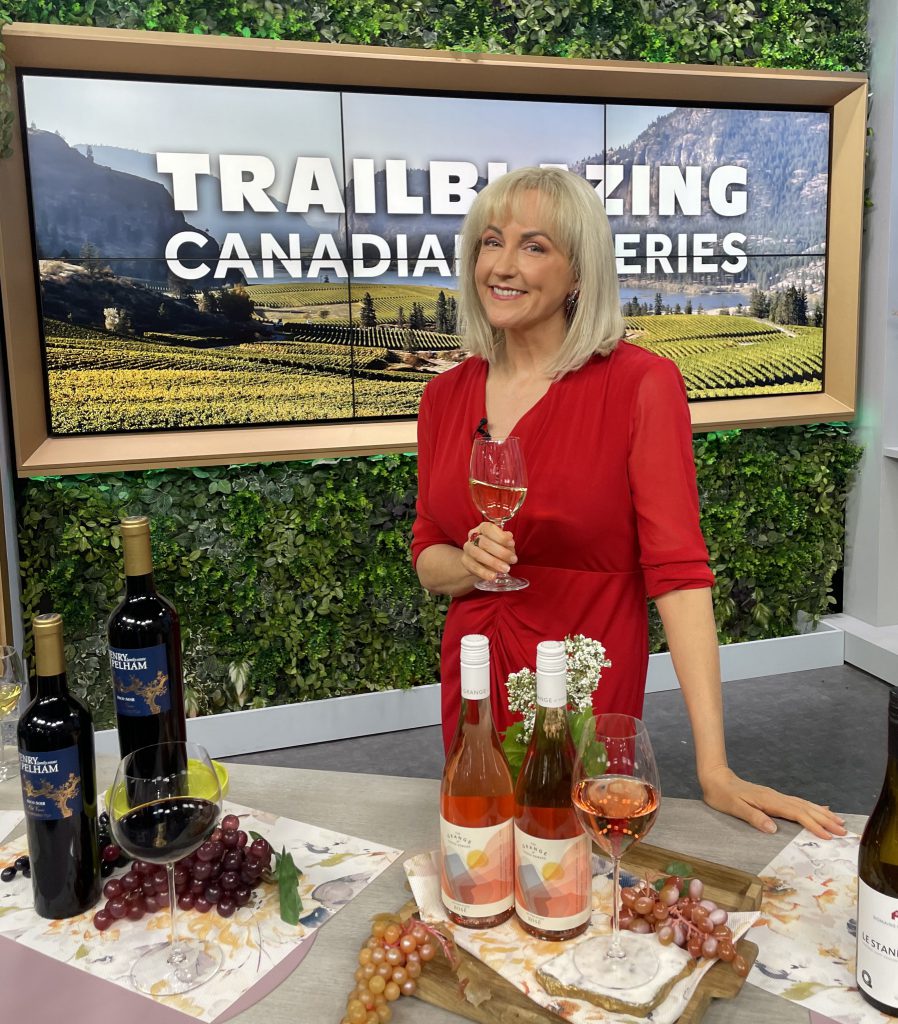
Posted with permission of CTV.












